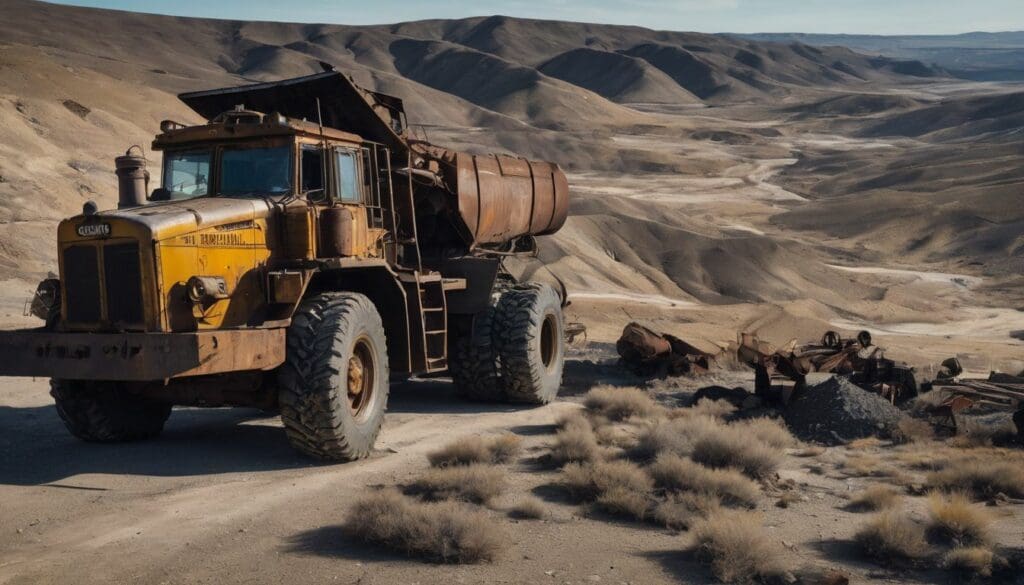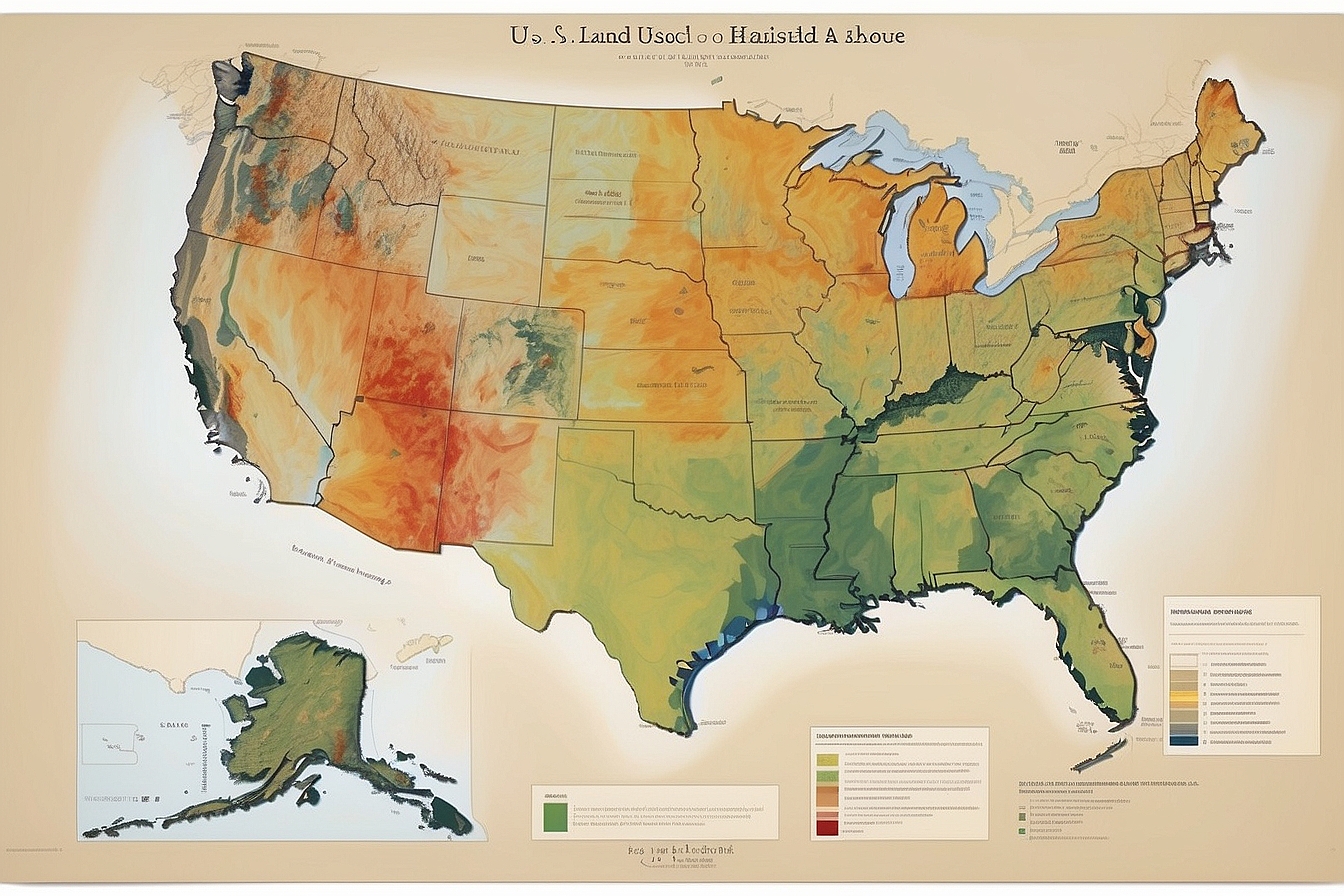Mining activities have a penchant for remoulding landscapes and communities in the most profound ways, often leaving behind scars that linger across generations. Much like you, we’ve witnessed the indelible marks imprinted by mining on both terrain and local peoples.
Our insights penetrate to the core of these complexities, offering clarity on the environmental cost and social disruption brought about by resource extraction. Join us as we explore how together we can work towards a future where mining casts a more delicate footprint—promoting healthier ecosystems and thriving communities.
Let’s delve into solutions with solidarity and hope.
Key Takeaways
- Mining operations lead to environmental damage like pollution, waste, land degradation and contribute significantly to greenhouse gas emissions. These effects can extend beyond the sites and cause health issues for local communities.
- The use of large volumes of water in mining processes puts strain on local water sources, which impacts surrounding ecosystems and people living in the area. Conservation efforts are needed to manage this effectively.
- Local communities face displacement and cultural disruption due to mining activities. Engaging with these communities is vital in decision-making processes to ensure their needs are met and rights respected.
- Sustainable mining practices such as reclamation projects, efficient water management, and using renewable energy can reduce the negative impact on both environment and societies nearby.
- Enforcing strict regulations, promoting transparent communication between stakeholders, and supporting innovation are key strategies that help mitigate the harmful effects of mining.
The Environmental Impact of Mining
Mining activities often lead to pollution and waste, land degradation, significant water use, and greenhouse gas emissions. These impacts can also have a detrimental effect on local communities, including displacement and health implications.
Pollution and waste
Pollution and waste from mining activities pose serious challenges to the environment. These processes often release harmful substances into the air and water, leading to environmental pollution that affects not just immediate surroundings but also regions far beyond the mining sites.
Metals and other contaminants can seep into soil and groundwater, creating long-term problems for ecosystems and human health alike.
We must address these issues by adopting sustainable development practices in our approach towards extraction of resources. Ensuring proper disposal methods for waste products is essential for preventing further soil destruction and contamination of water sources.
It’s crucial we work together to minimise the impacts of these pollutants on local communities, preserving their livelihoods as well as indigenous land rights.
Land degradation
Mining activities can lead to significant land degradation, impacting ecological systems and local communities. Soil erosion, deforestation, and the disruption of natural habitats are common consequences of mining practices.
The extraction of minerals often involves the removal of vegetation cover, leading to soil erosion and loss of fertile land. This process also alters the landscape, affecting biodiversity and compromising the ability of ecosystems to support wildlife.
Furthermore, mining can result in the contamination of soil with heavy metals and chemicals used during extraction processes. These pollutants can persist in the environment for extended periods, posing a risk to both human health and ecosystem stability.
Water use
Mining operations require significant amounts of water for various purposes, such as processing and dust suppression. This high demand for water can strain local water sources, impacting surrounding ecosystems and communities.
The extraction process involves the use of large volumes of water to separate valuable minerals from surrounding rock, contributing to potential shortages and contamination in nearby areas.
Efforts to minimise the impact of mining on water resources include implementing efficient recycling systems, employing sustainable water management practices, and conducting comprehensive environmental impact assessments before any mining activity commences.
Greenhouse gas emissions
Mining operations contribute significantly to greenhouse gas emissions, impacting both the local environment and the global climate. Emissions arise from various stages of mining, including the use of heavy machinery, transportation of materials, and processing of ore.
These activities release carbon dioxide (CO2), methane (CH4), and nitrous oxide (N2O) into the atmosphere, contributing to global warming and air pollution. The burning of fossil fuels for energy in mining operations also adds to these emissions.
Implementing sustainable practices and utilising renewable energy sources can help reduce these harmful emissions and mitigate the environmental impact of mining on our planet.
In addition to addressing greenhouse gas emissions from mining activities like metal extraction processes or hauling waste rock excavated during resource development projects is paramount.
Impact on local communities
Mining operations have a significant impact on local communities, leading to the displacement of indigenous people and disruption of traditional practices. The influx of workers can strain local resources, leading to land use conflicts and placing pressure on existing infrastructure.
Additionally, mining activities can result in social and health impacts for nearby communities, such as increased respiratory problems due to air pollution or contaminated water sources affecting public health.
Furthermore, the economic development brought by mining can lead to both positive and negative effects on local communities. While job opportunities may arise, there is also a risk of social disruption from an influx of workers.
Despite these challenges, effective community engagement and involvement can help mitigate the adverse impacts through dialogue and collaboration with affected stakeholders.
Solutions to Reduce the Impact of Mining
Implementing sustainable mining practices is crucial to reducing the environmental impact of mining, while effective mitigation measures can help minimise pollution and land degradation.
Additionally, involving local communities in decision-making processes and addressing their concerns can lead to more responsible mining activities.
Sustainable mining practices
- Use of advanced technologies to minimise pollution from mining activities: Employing advanced equipment and processes that reduce the release of harmful chemicals and waste into the environment.
- Reclamation and rehabilitation of mined areas: Rehabilitating disturbed lands by restoring vegetation, ecosystems, and natural habitats to prevent further degradation.
- Efficient water management strategies: Implementing water recycling systems and reducing water usage to minimise the impact on freshwater sources.
- Adoption of renewable energy sources: Transitioning towards using renewable energy such as solar or wind power to decrease greenhouse gas emissions associated with mining operations.
- Prioritising local community engagement: Actively involving local communities in decision-making processes, ensuring their concerns are heard and integrated into mining plans.
Implementing effective mitigation measures
Implementing effective mitigation measures is crucial in minimising the negative impact of mining on land and communities. Here are some key strategies to achieve this:
- Enforcing strict regulations and monitoring systems to control pollution and waste from mining activities, safeguarding the environment and public health.
- Conducting comprehensive environmental assessments before mining operations begin to identify potential risks and develop tailored mitigation plans.
- Prioritising reclamation and remediation of mining sites to restore land quality, protect biodiversity, and support ecosystem recovery.
- Investing in advanced technologies for reducing water use during mining processes, conserving this critical resource for local communities and ecosystems.
- Promoting transparent communication and collaboration between mining companies, local authorities, and affected communities to address social, health, and economic impacts.
- Upholding indigenous land rights through meaningful consultation processes, recognising traditional knowledge, and ensuring fair compensation for any related disruptions.
- Supporting research and innovation in sustainable mining practices that minimise greenhouse gas emissions while maximising economic benefits.
Community engagement and involvement
Mining companies have the responsibility to involve local communities in decision-making processes. Community engagement promotes trust and understanding, ensuring that the concerns of local residents are addressed.
By collaborating with indigenous groups and affected communities, mining companies can develop sustainable practices that respect land rights and mitigate social impacts. Engaging with community members facilitates meaningful dialogue, leading to solutions that benefit both the environment and people.
Involving citizens in decisions about mining activities can enhance the overall well-being of communities. Through open communication and partnerships, it becomes possible to create positive outcomes for environmental conservation and human welfare.
Conclusion
In conclusion, mining has a significant impact on the environment and local communities. It causes pollution and land degradation, displaces communities, and affects indigenous land rights.
Greenhouse gas emissions from mining activities contribute to climate change and pose health risks to nearby communities. Implementing sustainable practices and effective mitigation measures can help reduce these impacts and promote community engagement in decision-making.
Addressing the impact of mining on land and communities requires proactive regulation enforcement and consideration of social, economic, and environmental factors.
FAQs
1. How does mining affect the land?
Mining can cause land degradation, including soil erosion and contamination, which affects the health of local ecosystems.
2. Can mining have an impact on local communities?
Yes, mining operations can lead to community displacement and may negatively impact the social and health aspects of nearby populations.
3. What about indigenous peoples’ rights when it comes to mining?
Indigenous land rights are often at risk due to mining activities, as these projects could infringe upon their territories without proper consent or compensation.
4. Are there any benefits from mining besides economic gains?
While there are definite economic benefits for some through jobs and industry development, these must be balanced against potential environmental degradation and the drawbacks experienced by affected communities.





